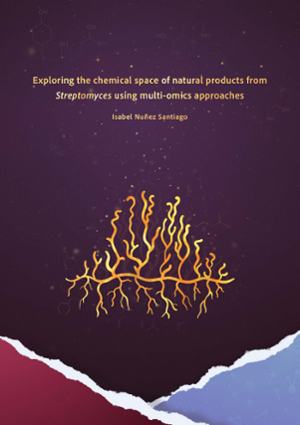Dissertation
Exploring the chemical space of natural products from Streptomyces using multi-omics approaches
The increasing resistance of pathogenic bacteria to antibiotics necessitates the discovery of new medicines.
- Author
- I. Nuñez Santiago
- Date
- 16 April 2025
- Links
- Thesis in Leiden Repository

Streptomycetes are filamentous soil bacteria that are known as nature's medicine makers, producing half of all clinically used antibiotics and many other clinical drugs. Genome mining revealed that these bacteria have a large repository of biosynthetic gene clusters (BGCS) that are silent under laboratory conditions, which represents vast untapped biosynthetic potential. The overall aim of this thesis is to obtain new insights into specialized metabolite production by streptomycetes and to develop new concepts to identify new antibiotics. For this we combined cultivation strategies such as elicitation and changing growth conditions, analytical chemistry including molecular networking, innovative screening assays and bioinformatics.
An important case study focused on lugdunomycin, a complex angucycline polyketide whose precise biosynthetic pathway was unclear. Our work revealed that its biosynthesis requires two independent BGCs, which deliver the substrates for the final reaction. NanoRAPIDS technology was developed to facilitate the discovery of low-abundance bioactive molecules in complex extracts, improving targeted hit selection. We uncovered new bioactive natural products and improved the understanding of the underlying biosynthetic pathways. Thus, this thesis provides new insights and technologies that contribute to antibiotic discovery and the fight against antimicrobial resistance.
